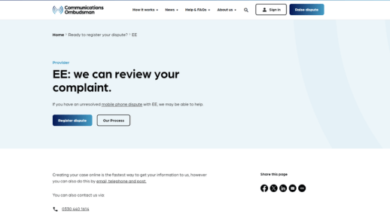
“Open Source vs. Closed Source Software” is an ongoing debate in the world of software development. Here are 15 pros and cons for each approach:
Open Source Software:
Pros:
- Cost-Efficiency: Open source software is often free or low-cost, reducing licensing expenses.
- Transparency: Users can view and modify the source code, ensuring transparency.
- Community Collaboration: Open source projects benefit from a large, diverse developer community.
- Customization: Developers can tailor open source software to their specific needs.
- Security: Bugs and vulnerabilities can be quickly identified and fixed by the community.
- Innovation: Open source fosters creativity and rapid development.
- Vendor Independence: No reliance on a single vendor for support or updates.
- Education: Learning opportunities for developers through open source contribution.
- No Lock-In: Users have the freedom to migrate to other solutions easily.
- Cross-Platform Compatibility: Many open source projects support multiple platforms.
- Longevity: Open source projects often have longer lifespans.
- Flexibility: Users have the flexibility to build upon existing solutions.
- Wide Range of Applications: Open source spans various domains and industries.
- User Control: Users have control over updates and feature implementations.
- Community Support: Users can access community forums and support.
Cons:
- Complexity: Some open source projects can be complex and challenging to implement.
- Limited Features: Not all open source software may have all the features users need.
- Lack of Official Support: Professional support may be limited or costly.
- Documentation: Inadequate documentation can hinder understanding and usage.
- Fragmentation: Multiple distributions of open source projects can cause fragmentation.
- Learning Curve: Adapting to open source tools may require training.
- Integration Challenges: Integration with proprietary software can be complex.
- Security Concerns: Open source software may have vulnerabilities if not properly managed.
- Version Control: Frequent updates can lead to compatibility issues.
- Quality Variability: The quality of open source projects can vary widely.
- Limited User Interface: Some open source tools may have less user-friendly interfaces.
- Support Availability: Support may be community-driven, with no guaranteed response times.
- Unclear Roadmap: Some open source projects may lack a clear development roadmap.
- Legal Issues: Licensing complexities may arise in certain situations.
- Dependency on Volunteers: The success of open source projects often relies on volunteers’ availability and dedication.
Closed Source Software:
Pros:
- Quality Assurance: Closed source software often goes through rigorous testing.
- Professional Support: Users can rely on paid customer support services.
- Ease of Use: Closed source software tends to have user-friendly interfaces.
- Regular Updates: Regular updates can enhance security and functionality.
- Legal Protection: Licensing and legal issues are typically managed by the vendor.
- Centralized Management: Single-vendor management simplifies accountability.
- Commercial Use: Well-suited for businesses and enterprises.
- Predictable Costs: Licensing and support costs are clear.
- Out-of-the-Box Solutions: Most features are readily available in commercial software.
- Security Certifications: Some closed source software undergoes security audits.
- Compliance: Easy to maintain compliance with proprietary licenses.
- Vendor Commitment: Vendors are committed to customer satisfaction.
- Third-Party Integrations: Often, better support for integrating with other proprietary software.
- Predictable Roadmap: Clear development and feature roadmaps.
- Mobile Apps: Many mobile apps are closed source for added security.
Cons:
- Cost: Closed source software often comes with high licensing and support costs.
- Vendor Lock-In: Users are tied to a specific vendor for updates and support.
- Lack of Transparency: Users can’t view or modify the source code.
- Limited Customization: Tailoring the software may be limited.
- Dependency: Users depend on the vendor’s development decisions.
- Inflexibility: Less room for user-driven feature requests.
- Security Concerns: Vulnerabilities may remain hidden to users.
- Privacy: Closed source software may collect user data.
- Hidden Agenda: Vendor intentions and data usage can be unclear.
- Software End-of-Life: Vendors can discontinue support for older versions.
- Resource Intensive: Closed source software may require more system resources.
- Compatibility Issues: Vendor-specific file formats and protocols.
- Limited Community Input: Users have little to no influence on development.
- Innovative Stagnation: Limited community input can result in less innovation.
- Limited Longevity: Closed source software may have shorter lifespans.
The choice between open source and closed source software depends on the specific needs, preferences, and constraints of users and organizations. It’s essential to weigh the pros and cons of each approach to make an informed decision.




